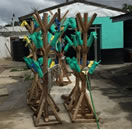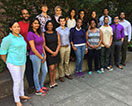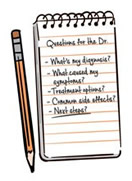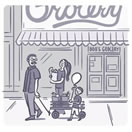FEATURE STORIES
Letter from Dr. Stephen I. Katz: NIAMS Launches New Spanish-Language Website
Many diseases in our scientific portfolio, including lupus, arthritis and osteoporosis, have profoundly negative effects among Hispanics/Latinos and other minority groups, in terms of prevalence and poor health outcomes. We are committed to providing quality health information to all people, no matter what language they speak or what culture they identify with. For this reason, the NIAMS has launched a new Spanish-language website that provides free health information on conditions of the bones, joints, muscles and skin. The site is being launched to coincide with National Hispanic Heritage Month.
Image: Stephen I. Katz, M.D., Ph.D.
A Conversation With NIAMS Scientist Dr. Mariana Kaplan
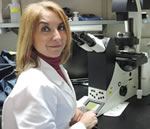
Mariana Kaplan, M.D., a rheumatologist by training, joined the NIAMS in September 2013 as chief of the NIAMS Systemic Autoimmunity Branch to head a new research program focusing on adult rheumatic diseases. She is researching systemic autoimmunity, particularly systemic lupus erythematosus, and the immune system’s role in disease development and associated organ damage. Dr. Kaplan graduated from the National Autonomous University of Mexico School of Medicine in 1992. In this interview, she shares her career journey and offers advice for future scientists.
Image: Mariana Kaplan, M.D., at work in the Systemic Autoimmunity Branch at NIAMS.
NEWS AND EVENTS
NIAMS Staff Join in the Fight Against Ebola
The unprecedented Ebola epidemic in West Africa, which has claimed more than 11,000 lives, prompted many National Institutes of Health (NIH) physicians, nurses, pharmacists and lab technicians to assist with the crisis, both at home and abroad. Among them were a number of NIAMS staffers.
Image: Personal protective equipment that has been used and washed, drying in the sun outside of Redemption Hospital in Monrovia, Liberia. Photo credit: Alice Fike, NP, NIAMS.
NIAMS Interns Share Their 2015 Summer Experiences
The NIAMS Intramural Research Program offers a Summer Internship Program that provides outstanding opportunities for high school, undergraduate, graduate and medical students contemplating a career in biomedical research or academic medicine. Our 2015 summer interns received career mentoring from NIAMS researchers, attended lectures and symposia, engaged in basic and clinical research and gained notable experience that will help them pursue their career goals. It is our pleasure to share with you their summer experiences.
Image: Robert Walker, Ph.D., Chief, Career Development and Outreach Branch (right); NIAMS 2015 summer interns (center); Stephanie Mathews, Ph.D., Scientific Program Manager (left).
New Resource Launched for American Indians and Alaska Natives
In July, Honoring Health: Resources for American Indians and Alaska Natives, an e-newsletter featuring health and wellness information, was launched. Each issue will highlight a different health topic along with helpful resources for community members and health professionals. The e-newsletter is brought to you by the NIH, the Administration for Community Living and the Indian Health Service. Subscribe now.
MedlinePlus Has a New Look!
MedlinePlus, your trusted source for free, reliable health information, has a brand new look. The new version uses responsive web design for ease of use on any device, whether that is a desktop monitor or mobile touchscreen. Responsive pages automatically change their layout to fit your screen.
NIH Body Weight Planner Added to SuperTracker Food and Activity Tool: Science-Based Technology Provides Users Greater Customizing To Help Reach and Sustain a Healthy Weight
The U.S. Department of Agriculture (USDA) and the NIH have partnered to add the NIH Body Weight Planner to USDA’s SuperTracker online tool as a goal-setting resource to help people achieve and stay at a healthy weight. Created in 2011, the SuperTracker tool empowers people to build a healthier diet, manage weight and reduce the risk of chronic disease. Users can determine what and how much to eat; track foods, physical activities and weight; and personalize with goal setting, virtual coaching and journaling. With science-based technology drawing on years of research, the Body Weight Planner will enable SuperTracker’s more than 5.5 million registered users to tailor their plans to reach a goal weight during a specific timeframe, and maintain that weight afterward.
New Mobile App Provides Up-to-Date U.S. Health Statistics on the Go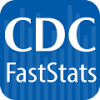
Responding to the needs of an increasingly mobile public health community, the National Center for Health Statistics has launched its first-ever mobile app, FastStats. It provides on-the-go access to current statistics on topics of public health importance. Topics include diseases and conditions, injuries, life stages and populations, health care and insurance, and birth and mortality data for each U.S. state and territory.
Events
NIAMS To Host Twitter Chat on Psoriasis
In recognition of World Psoriasis Day, the NIAMS will host a Twitter chat on the topic of psoriasis on Thursday, October 29, 2015, from 1 p.m. to 2 p.m. EDT. Co-hosts for the chat will include the National Heart, Lung, and Blood Institute (NHLBI); the National Psoriasis Foundation; and the American Academy of Dermatology. The chat will focus on the symptoms and impact of psoriasis, available treatments and current research. Followers will also learn how they can participate in NIH clinical studies. Experts from the hosting organizations will answer questions from the audience.
AHRQ Research Conference Returns in 2015
The Agency for Healthcare Research and Quality's (AHRQ) research conference is scheduled for October 4–6, 2015, at the Crystal Gateway Marriott Hotel and Convention Center in Crystal City, Virginia. The conference will bring together experts in health care research and policy to participate in sessions focused on addressing today’s challenges in improving quality, safety, access and value in health care.
FEATURED RESOURCES
September Is National Hispanic Heritage Month
Being Hispanic means enjoying a rich culture and common language shaped by the history and personal experiences of multiple generations. Being Hispanic also means you may have an increased risk for certain health diseases or conditions, like lupus or osteoporosis. To celebrate National Hispanic Heritage Month, take some time and learn what you can do to manage these and other conditions. In celebrating family and culture, what can be better than taking care of your health?
NIAMS’ Bone Health for Life Now Available in Asian Languages
The NIAMS’ recently-updated brochure, Bone Health for Life: Easy-to-Read Information for Patients and Families, is now available in Chinese, Korean and Vietnamese. This fundamental bone health resource presents information in an easy-to-read format and is enhanced with images. It is available for download on the NIAMS website and on the NIH Osteoporosis and Related Bone Diseases ~ National Resource Center website.
Spanish-Language Tip Sheet About Clinical Trials
When clinical trials include diverse participants, study results are likely to have a much wider applicability. That’s why researchers need volunteers of different ages, sexes, races and ethnicities. Learn more in the National Institute on Aging’s (NIA) new Spanish-language tip sheet Los estudios clínicos y las personas mayores (Clinical Trials and Older People). This tip sheet answers:
- What is a clinical trial?
- Why do clinical trials need older and diverse participants?
- What are the benefits and risks of a clinical trial?
New Osteoarthritis and Exercise Tip Sheet Available
The NIA has added a new tip sheet, Exercising with Osteoarthritis, to its Go4Life website. The tip sheet describes the benefits of regular exercise for people with osteoarthritis and refers you to additional resources, such as:
- Improve Your Flexibility
- Improve Your Strength
- Improve Your Endurance
- Exercise DVD
- Tip Sheets: Activities and General Fitness
Consejos sobre la artritis (Arthritis Advice) Fact Sheet
The NIA has an Arthritis Advice fact sheet available in Spanish and English. It discusses different types of arthritis, symptoms, treatments and ways to control joint pain. For instance, keys to living with arthritis include exercise; getting enough rest; eating a healthy, well-balanced diet; and learning the right way to use and protect your joints.
NIHSeniorHealth: Skin Care and Aging
Your skin changes as you age. It becomes thinner, loses fat and no longer looks as plump and smooth as it once did. But there are things you can do protect your skin and make it feel and look better.
New AHRQ YouTube Channel Features Patient Safety Videos
AHRQ has developed a new patient safety channel that features videos of evidence-based training programs used by U.S. hospitals to improve care quality through effective communications and teamwork. The new channel includes nearly 50 videos that describe key elements of the Comprehensive Unit-based Safety Program Toolkit, a patient safety protocol used successfully by hospital intensive care units to reduce potentially deadly health care-acquired infections. The patient safety channel also includes more than 50 videos on TeamSTEPPS®, a patient safety protocol developed by AHRQ and the U.S. Department of Defense that lowers the risk of adverse events through better communication and teamwork skills. Both training programs can be customized to the individual training needs of hospitals, hospital units and clinicians.
New AHRQ Continuing Education Resources Explore Ways To Prevent Patient Falls and Pressure Ulcers
AHRQ’s new continuing education resources offer health care professionals continuing education and continuing medical education credits on improving patient safety by preventing pressure ulcers and falls in hospitals. Each year an estimated 2.5 million U.S. patients will develop a pressure ulcer, and a single large hospital could experience more than 1,000 patient falls per year. Approximately 30 to 50 percent of falls result in injuries, and complications from hospital-acquired pressure ulcers cause as many as 60,000 deaths each year. New videos and topic profiles that explore prevention of in-facility pressure ulcers and in-facility falls are available for continuing education credit. Additional resources are also available.
Are Some Cosmetics Promising Too Much?
Americans spend a lot of money on creams, lotions and other cosmetics that promise to improve their skin, hair and even eyelashes. But sometimes those promises go too far. The U.S. Food and Drug Administration (FDA) warns cosmetics companies when they make claims about their products that classify them as drugs, not cosmetics. FDA has issued warning letters citing drug claims associated with topical skin care, hair care and eyelash/eyebrow preparations, noted on both product labeling and websites. Some examples of the drug claims cited are acne treatment, dandruff treatment and hair restoration.
The Office of Minority Health Blog for Health Equity
The Office of Minority Health Blog for Health Equity is dedicated to raising awareness about health disparities and sharing the views, stories and ideas that unite us toward a common goal of improving the health of all Americans.
Other Resources
NIH News in Health
Read practical health information in NIH News in Health, which is reviewed by the NIH’s medical experts and is based on research conducted either by the NIH’s own scientists or by its grantees at universities and medical schools around the country.
Talking With Your Doctor: Make the Most of Your Appointment
Patients and health care providers share a very personal relationship. Doctors need to know a lot about you, your family and your lifestyle to give you the best medical care. And you need to speak up and share your concerns and questions. Clear and honest communication between you and your physician can help you both make smart choices about your health.
Opportunities Abound for Moving Around: Get Active, Wherever You Are
You know that physical activity can help you live a longer, healthier life. But did you know you don’t need to join a gym or use costly equipment to be physically active? No matter where you live, work or go to school, you can find ways to move more and sit less throughout your day. Moving more and sitting less can reduce your risk for many serious conditions, including heart disease, diabetes, osteoporosis and certain kinds of cancer.
We invite you to subscribe to the NIAMS Update e-newsletter for the latest scientific news and resources on diseases of the bones, joints, muscles and skin. The NIAMS also publishes the Honoring Health: Resources for American Indians and Alaska Natives e-newsletter, which is distributed three times per year and highlights a different health topic for each issue, along with helpful resources for community members and health professionals.


